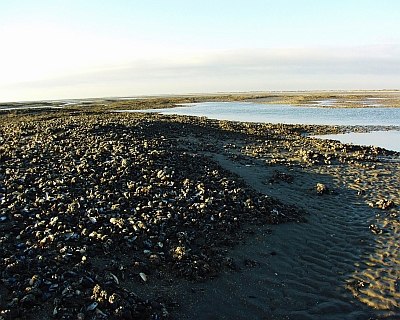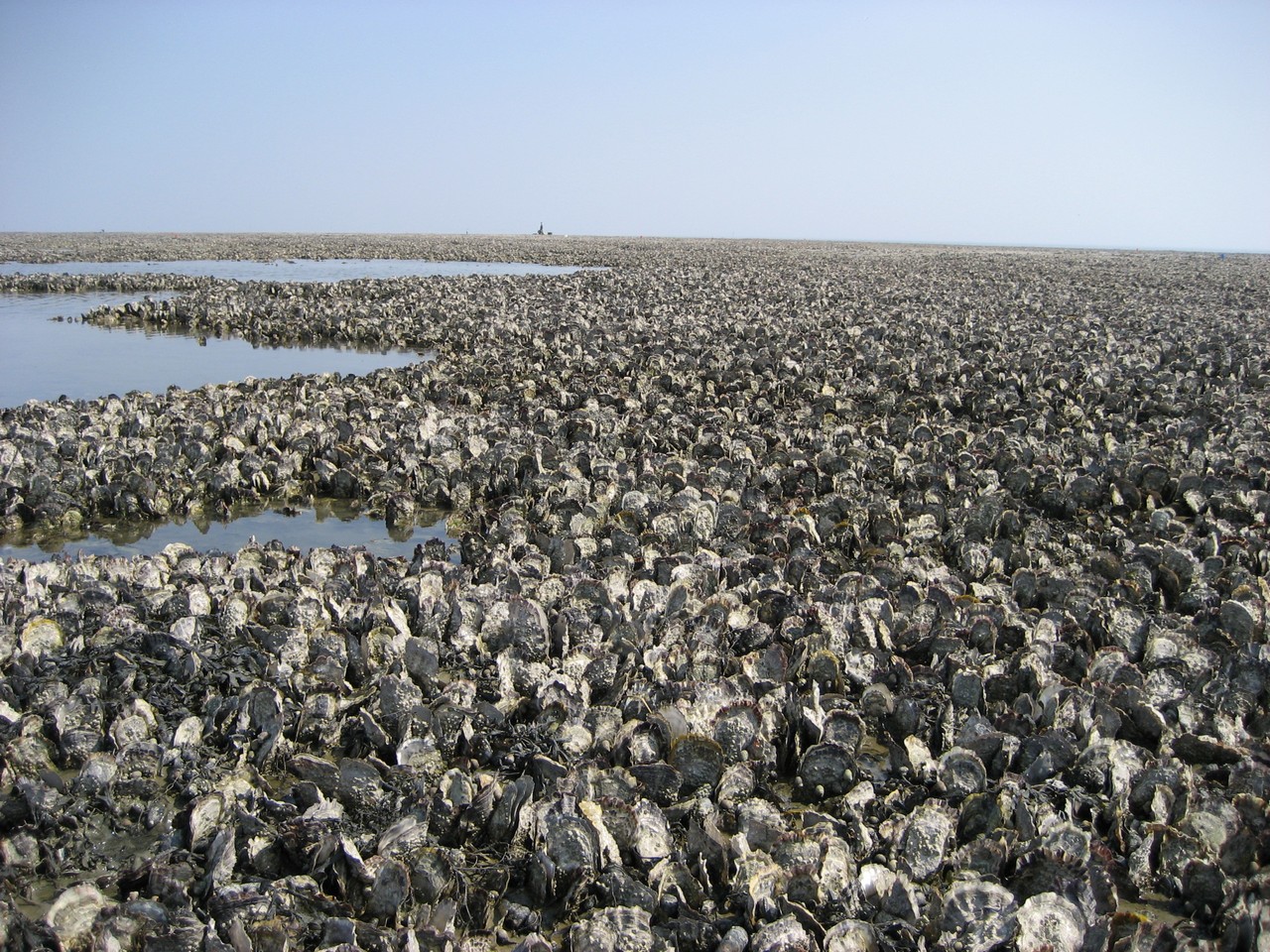Supplement 4.2: Mussel Beds and Oyster Reefs
Mussel Beds
It may consist of a spatially well defined irregular collection of more or less protruding smaller beds, which may be called patches, seperated by open spaces.
This description also includes young beds with a high abundance of small mussels. The described structure may not be distinct in young beds or just settled beds.
Under natural conditions, boundaries of mussel beds and the surrounding intertidal flat are not always clear-cut. Therefore scientists developed criteria in order to make standardised decisions on the boundaries of mussel beds when carrying out field surveys:
Oyster Reefs
The term reef has originally been introduced in seafaring and describes any kind of shoal, for example a sandbank. In Biology and Geology,
These landforms thus have a consolidated organic framework that persists when organisms die. Reefs are usually built in shallow water but there are also deep-water reefs and cold-water reefs.
Four processes that take place simultaneously are involved in the growing of reefs: Build-up, Degradation, Sedimentation, and Cementation.
- Constructional (reef-building or engineering) processes: Build-up of the primary structure by colony forming organisms,
build-up of the secondary structure through incrustation, filling with carbonate particles and accumulation of sediment.
- Destructive processes: the physical destruction near the sea surface through waves and currents.
Storms may have great short term effects on reefs. However, the rate of erosion is nearly the same as that of constructional processes.
- Sedimentation of single particles is responsible for the actual build-up of a reef structure.
Particles derive from organic residues of organisms and from destruction of the reef body. The fine material may be transported into
interstices in the reef and fill them in.
- Cementation is the process of deposition of dissolved mineral components in the interstices of the reef structure.
This process results in resistance of the structure to waves.
The Pacific Oyster (Crassostrea gigas) is an example of a so-called reef-builder or ecosystem engineer.


